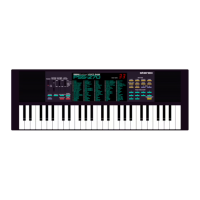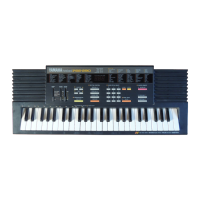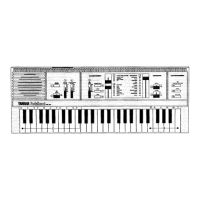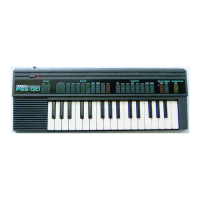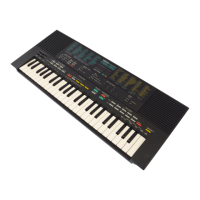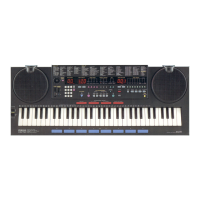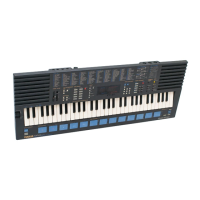
Do you have a question about the Yamaha PortaSound PSS-280 and is the answer not in the manual?
| Number of Keys | 49 |
|---|---|
| Voices | 100 |
| Effects | Reverb, Chorus |
| MIDI | No |
| Type | Portable Keyboard |
| Speakers | Yes |
| Display | LED |
| Power | 6 x AA batteries or AC adapter |
Optimal placement to avoid environmental damage.
Avoiding signal interference from electronic devices.
Protecting instrument from impact, force, and proper storage.
Recommendations for cleaning the instrument's exterior.
Explains powering via batteries or AC adaptor, and battery status.
Using headphones for private practice, disabling speakers.
Guide for connecting external audio equipment to the PortaSound.
Explains operation of POWER/MODE, DEMONSTRATION, and MULTI DISPLAY.
Guide to choosing from 100 instrument sounds.
Guide to choosing from 20 rhythm patterns.
Introduction to programming and using chord progressions.
Detailed explanation of buttons, levers, and sections on the control panel.
Description of jacks (DC IN, HEADPHONES/OUT) and MULTI DISPLAY.
Steps 1-3 for selecting a voice, including basic operation.
How to create layered sounds using two voices simultaneously.
How to change the overall key of the notes being played.
Guide to choosing from 20 different rhythm styles.
Instructions for starting and stopping the rhythm patterns.
How to change the tempo of the rhythm for songs.
Easy chord/bass accompaniment by pressing 1-3 keys.
Accompaniment using real chord structures, suitable for experienced players.
Produces accompaniment using only bass notes.
Using intro/fill-in for drum introductions and musical fills.
Synchronizing rhythm start with keyboard playing.
Programming complex chord sequences for playback.
Playing back recorded chord progressions and accompanying yourself.
Managing and switching between Chord Memory banks 1 and 2.
Practical example of playing a song using specific settings.

